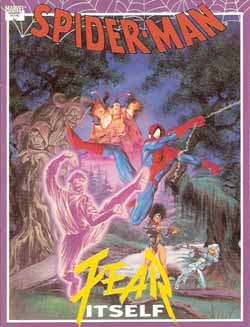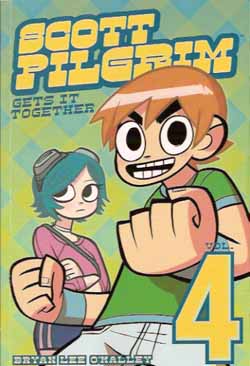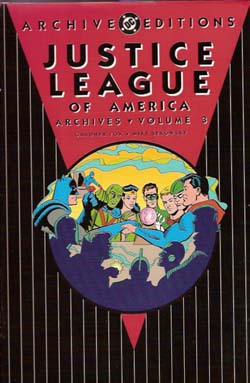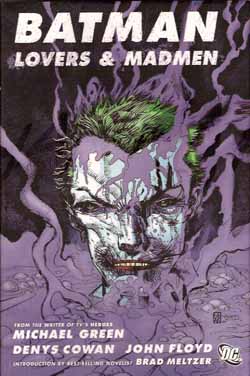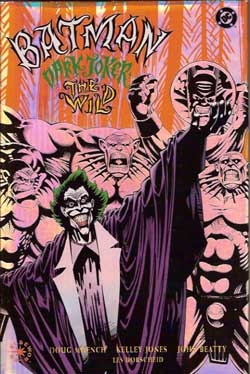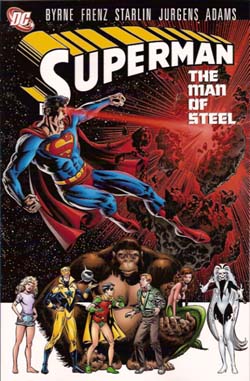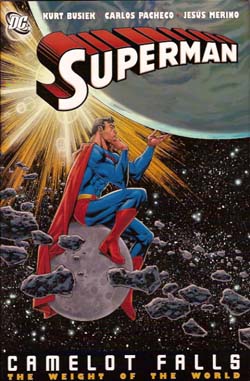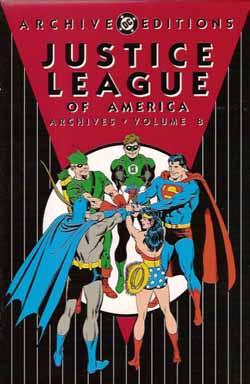
By Gardner Fox, Denny O’Neil, Mike Sekowsky, Dick Dillin & various (DC Comics) ISBN: 1-56389-977-9
By 1968 the new superhero boom looked to be dying just as its predecessor had at the end of the 1940s. Sales were down generally in the comics industry and costs were beginning to spiral, and more importantly “free†entertainment, in the form of television, was by now ensconced in even the poorest household. If you were a kid in the sixties, think on just how many brilliant cartoon shows were created in that decade, when artists like Alex Toth and Doug Wildey were working in West Coast animation studios.
It was also a time of great political and social upheaval. Change was everywhere and unrest even reached the corridors of DC. When a number of creators agitated for increased work-benefits the request was not looked upon kindly. Many left the company for other outfits and some left comics altogether.
This deluxe volume reflects the turmoil of the times as the writer and penciller who had created every single adventure of the World’s Greatest Superheroes since their inception gave way to a “new wave†writer and a fresh if not young artist. Collecting issues #61-66 and #68-70 (#67 was a giant edition which reprinted issues #4, 14 and 31, and only the wonderful Neal Adams cover is included here), this edition covers a society in transition and a visible change in the way DC comics stories were told.
Kicking off is ‘Operation: Jail the Justice League!’, a sharp and witty action-mystery with an army of super-villains by Gardner Fox, Mike Sekowsky and the superb Sid Greene wherein the team must read between the lines as Green Arrow announces that he’s quitting the team and super-hero-ing!
George Roussos replaced Greene as inker for ‘Panic from a Blackmail Box’, a taut thriller about redemption involving the time-delayed revelations of a different kind of villain, and ‘Time Signs a Death-Warrant for the Justice League’, where the Key finally acts on a scheme he initiated way back in Justice League of America #41. This rowdy fist-fest was Sekowky’s last pencilling job on the team. He was transferring his attentions to the revamping of Wonder Woman (for which see the marvellous Diana Prince: Wonder Woman volume 1, ISBN: 978-1-84576-776-1).
Gardner Fox ended his magnificent run on a high point with the two-part annual team up of the League and the Justice Society of Earth Two. Creative to the very end, his last story was yet another of the Golden-Age retoolings that had recreated the superhero genre. Issues #64 and 65 featured the ‘Stormy Return of the Red Tornado’ and ‘T.O. Morrow Kills the Justice League – Today!’ with a cyclonic super-android taking on the mantle of the comedic 1940s “Mystery Man†who appeared in the very first JSA adventure (if you’re interested, the original Red Tornado was a brawny washer-woman named Ma Hunkle).
Fox’s departing thriller was the pencilling debut of Blackhawk artist Dick Dillin, a prolific artist who would draw all the JLA’s exploits for the next twelve years, as well as many others adventures of DC’s top characters like Superman and Batman. His first tales were inked by the returning Sid Greene, a pairing that seemed vibrant and realistic after the eccentrically stylish, almost abstract Sekowsky.
Not even the heroes themselves were immune to changes. As the market contracted and shifted so too did the team. With no fanfare the Martian Manhunter was dropped after #61. He just stopped appearing and the minor heroes (ones whose strips or comics had been cancelled) got less and less space in future tales.
Denny O’Neil took over with #66, a rather dated and heavy-handed satire entitled ‘Divided they Fall!’ wherein defrocked banana-republic dictator Generalissimo Demmy Gog (did I mention it was heavy-handed?) uses a stolen morale-boosting ray to cause chaos on a college campus. O’Neil was more impressive with his second outing. ‘Neverwas – the Chaos Maker!’ was a time-lost monster on a rampage, but the compassionate solution to his depredations better fitted the social climate and hinted at the joys to come when the author began his legendary run on Green Lantern/Green Arrow.
‘A Matter of Menace’ featured a plot to frame Green Arrow, but is most remarkable for the brief return of Diana Prince. Wonder Woman had silently vanished at the end of #66 and her cameo here is more a plug for her own adventure series than a regulation guest-shot. The volume concludes with a more traditional one in #70’s ‘Versus the Creeper’ where the much diminished team of Superman, Batman, Flash, Green Lantern and Atom battle misguided aliens inadvertently brought to Earth by the astoundingly naff Mind-Grabber Kid (most recently seen in Seven Soldiers and 52) with the eerie Steve Ditko-created hero along for the ride but largely superfluous to the plot.
Although an era of greatness had ended, it ended at the right time and for sound reasons. The audience was changing and the industry was forced to change with them. Some of the Justice League’s greatest triumphs were still to come…
© 1968, 1969, 2003 DC Comics. All Rights Reserved.
